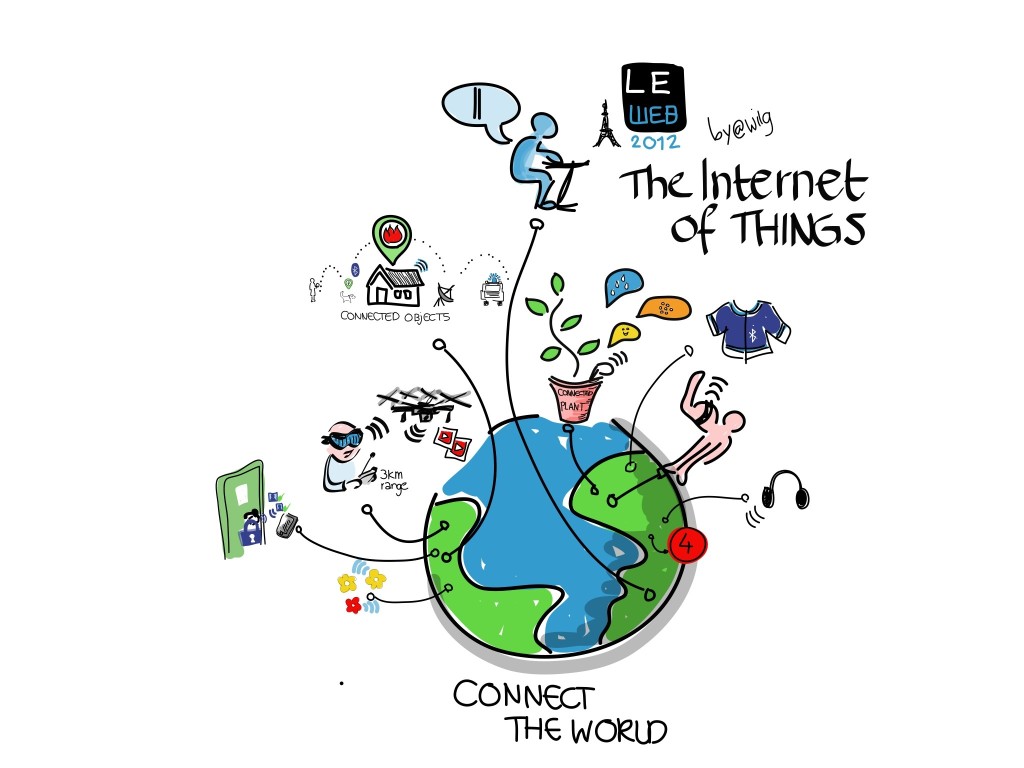The Future of Technology: The Ones We Cannot See
In a world driven by technology, we are seldom aware of how a machine works or what goes behind as functional security system. This is the age where, while machines have become smaller, so has the technology driving them. And most of the time, we generally are not able to see it.
The latest technological innovation that has taken the fancy of a large section of scientists, investors and geeks is the internet of things, or IoT for short. Very few of us realize that behind the external functional machine that is generally visible, the actual work is done by sensors.

A world of Data
Daniel Burrus, a technology writer, founder and CEO of Burrus Research says sensors should be clearly distinguished from machines. “It doesn’t do anything in the same sense that a machine does. It measures, it evaluates; in short, it gathers data,” Burrus says. Yet, the Internet of Things is made possible by the combination of sensors and machines. Hence it can be said that the intersection where data is gathered and treated is the place where the real value of the Internet of Things is created.
This place from where value emerges is called the Cloud, through which analysis of data is operated in real time by calculators hosted very far away from the users. The cloud is what enables the apps to go to work for you anytime, anywhere. However, you cannot see the cloud, but only the results of the analysis.
Embedded pocket technologies
Similarly, some technologies and tools used are so concealed that a lay man would not even realize it exists. However, these are technologies we all use in our everyday life. Have you ever think of what a banknote was made of? Actually, a banknote is such a sophisticated object that even counterfeiters are supposed to have trouble to spot where security features are hidden.
Thomas Savare, CEO of famous banknote printing company Oberthur Fiduciaire, explains how engineers of his company design banknote technologies that make them reliable in the eyes of its clients – 70 central banks all around the world : “We do not only work on surface and texture of banknotes; we also pay in-depth attention to materials. Central banks rely on private printers to provide paper money which conveys a strong sense of confidence”, he says.
Hence the many patents filed by Oberthur Fiduciaire, “It’s all a question of innovation versus technology catchup,” says Savare. “Since Oberthur Fiduciaire prints banknotes, history repeats itself. We always need to employ great ingenuity to counter fraudsters’ plans…. The one thing that has changed since then, is that counterfeiting banknotes is no more a question of skillfulness, but definitely a question of technological arsenal”.
Ever smaller technologies
Be it the cell phone or the TV, until the car one drives or the most sophisticated airplanes – nothing would be functional without microprocessors. And yet they can never be seen as they are always fitted inside a gadget or a machine.
The latest trend in microprocessors is the strive to add more transistors to a micro chip so that it functions faster and is able to do more functions at a time. This is the reason why some cell phones have better sensors than others, for example. The efficiency of a microprocessor is gauged by the number of cores it has with multi-core processors being more popular and naturally, more expensive.
“These are still early days for the widespread deployment of multi-core processors in embedded computing. Adoption of these processors will depend how fast the entire ecosystem responds to the standardization of technology,” says Sukriti Jalali, who is a technical expert with 15 years of industry experience in the design and development of real-time and embedded systems.
From micro-technologies to invisible components
The development of such technologies has also increased the number of patent applications that are being put up at patent offices. Today, the development of nanotechnology and the advanced applications of the same is booming in many fields, such as chemistry, biology, physics, materials science and engineering.
For example, researchers have observed a near tripling of the efficiency for photovoltaic devices produced with sandwiched, nano-thick layers of metal and plastic. This was achieved through extensive research and, naturally, through significant financial spending.
“The total volume of published nanotechnology patent literature increased 5 percent in 2013 and has more than tripled since 2003. The number of U.S. patents issued in nanotechnology was more than 6,000 in 2013, a 17 percent increase over 2012,” says Iona Kaiser, partner in the law firm McDermott Will & Emery LLP, an expert in patent prosecution, transactions and strategic portfolio management.
As a matter of fact, at a time when miniaturization is no longer a mean but an end in itself, competition takes place on patents war background. Sakti3, a Michigan startup, has a field day with it: the company has discovered a way to produce solid lithium batteries with a thin-film deposition process, that allows its technology to offer about double the energy density. “That’s double the talk-time on your phone; double the range in your electric car… The battery cells will also have a long service life and be safer”, Ann Marie Sastry, CEO of Sakti3, explains.
The startup’s technology is now likely to be widely used in consumer electronics, notably since Sakti3 was bought for $90 million by Dyson, the famous British maker of bagless vacuum cleaners. This one actually glimpses its future as a world leader in domestic robotics.


